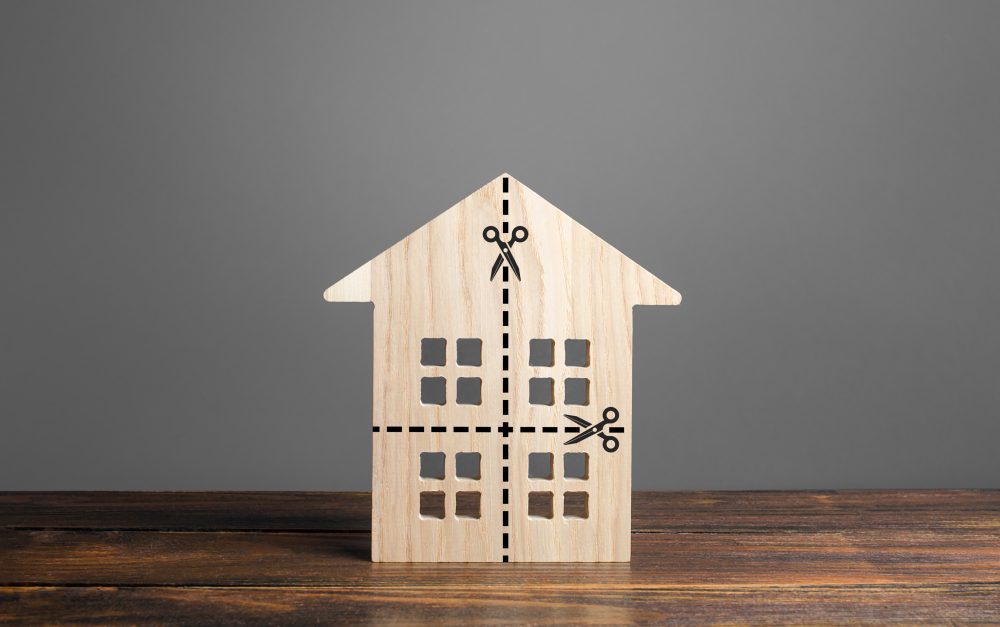
Understanding easements is crucial for homeowners, especially when dealing with shared property use or potential disputes. Key concepts from shared property ownership apply to easements and can help homeowners navigate these situations.
What is a Property Easement?
A property easement is a legal right that allows someone else access to or through a portion of your property for a specific purpose, even though you still own the land. Easements are typically granted to benefit neighboring properties, utility companies, or public services and often remain in place even when the property changes ownership.
Types of Shared Property Ownership
- Joint Tenancy: Co-owners hold equal shares with the right of survivorship, meaning upon one owner’s death, their share automatically transfers to the surviving owners. This arrangement is common among married couples and close family members.
- Tenancy in Common: Allows co-owners to hold unequal shares without the right of survivorship. If a co-owner dies, their share passes to their designated heir or beneficiary. This form is typical among friends or business partners.
Types of Easements and Shared Use
- Easements by Necessity: When a property owner needs access through a neighbor’s land to reach their property.
- Easements by Agreement: Similar to co-ownership agreements, these are established through mutual consent and formalized legally.
- Prescriptive Easements: Arises when someone uses part of another’s property openly and continuously without permission for a specified period.
Why It Matters: Just like understanding joint ownership types, knowing which easement affects your property helps clarify your rights and responsibilities.
Financial and Legal Implications
- Shared Maintenance Costs: Easements often come with shared obligations, like maintaining a driveway or pathway. Similar to joint property ownership, disagreements can arise if responsibilities aren’t clearly defined.
- Impact on Property Value: Easements, like encroachments, can influence property valuation or complicate selling.
- Legal Boundaries: Understanding easement rights can prevent costly legal disputes over access and usage.
Key Insight: Just as a co-ownership agreement clarifies responsibilities, documenting easement terms can prevent misunderstandings and conflicts.
Common Disputes and Resolution Strategies
- Access Issues: Disputes may arise if an easement holder blocks or overuses access rights.
- Maintenance Conflicts: Shared responsibilities for upkeep (e.g., driveways, pathways) can lead to disagreements.
- Property Modifications: Changes made by one party can infringe on easement rights.
Resolution Tips:
- Clear Communication: For example, with property line disputes, respectful conversations can resolve many easement conflicts without litigation.
- Legal Documentation: Having an official agreement outlining easement terms reduces the risk of disputes.
- Professional Guidance: Consulting a notary or real estate lawyer ensures agreements are legally binding and enforceable.
Easements and Property Surveys
- Residential Survey: A residential property survey or property land survey identifies existing easements and clarifies property boundaries.
- Preventing Disputes: Accurate data from a land surveyor ensures homeowners understand where easements are located and how they affect property use.
Key Insight: Just as with co-ownership, accurate survey data can prevent disputes and provide peace of mind.
The Role of Legal Agreements
- Co-ownership and Easements: Both benefit from well-drafted legal agreements that outline rights, obligations, and procedures for conflict resolution.
- Updating Agreements: Easements, like joint tenancy (co-ownership), may require updates as circumstances change (e.g., adding new access points).
Why It’s Important: Formal agreements help avoid ambiguity and provide a legal basis for resolving issues if disputes arise.
A Real-Life Example: The Shared Driveway Dispute
In 2015, a notable easement dispute arose in a suburban neighborhood where two adjacent homeowners shared a driveway. One homeowner decided to repave the driveway and install security lighting without consulting the neighbor, leading to a conflict over the modifications. The neighbor argued that these changes increased the burden on their shared property use and interfered with their rights under the easement.
This case highlights the importance of open communication and clear legal agreements when dealing with shared property use. A property survey and a mutually agreed-upon maintenance plan could have clarified responsibilities and prevented this conflict. This example underscores the relevance of proactive steps, such as defining easement terms and maintaining open dialogue to avoid misunderstandings.
At GA Land Surveyors, we provide accurate residential surveys and expert guidance on your property land survey. Contact us today to schedule your survey for clarity, compliance, and peace of mind on your property lines!



